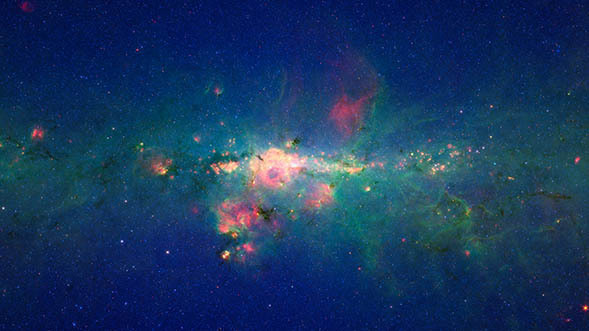
Most galaxies contain at least one, and occasionally several, supermassive black holes at their center, although not all of them are actively "eating". Spitzer's infrared eyes were perfect for scouting the gluttonous black holes that are actively munching.
Because no light can escape a black hole, astronomers must detect the active ones indirectly. Active supermassive black holes feed on the giant rings of gas and dust that circle them. As this dusty material falls into the black hole at incredible speeds, friction causes the plunging particles to light up brilliantly, primarily in X-ray light. However, some of this falling dust also glows in the infrared.
In some cases, light generated by friction between the falling dust grains outshines the entire host galaxy. Astronomers refer to these objects as Active Galactic Nuclei (AGNs). The munching supermassive black hole at the galaxy's core is called a quasar, which is one type of AGNs.
With Spitzer's dust-piercing infrared eyes, astronomers were able to find the populations of "missing" munching black holes. These cosmic gluttons were hidden from optical and X-ray telescopes by the veil of dust that circled them.



